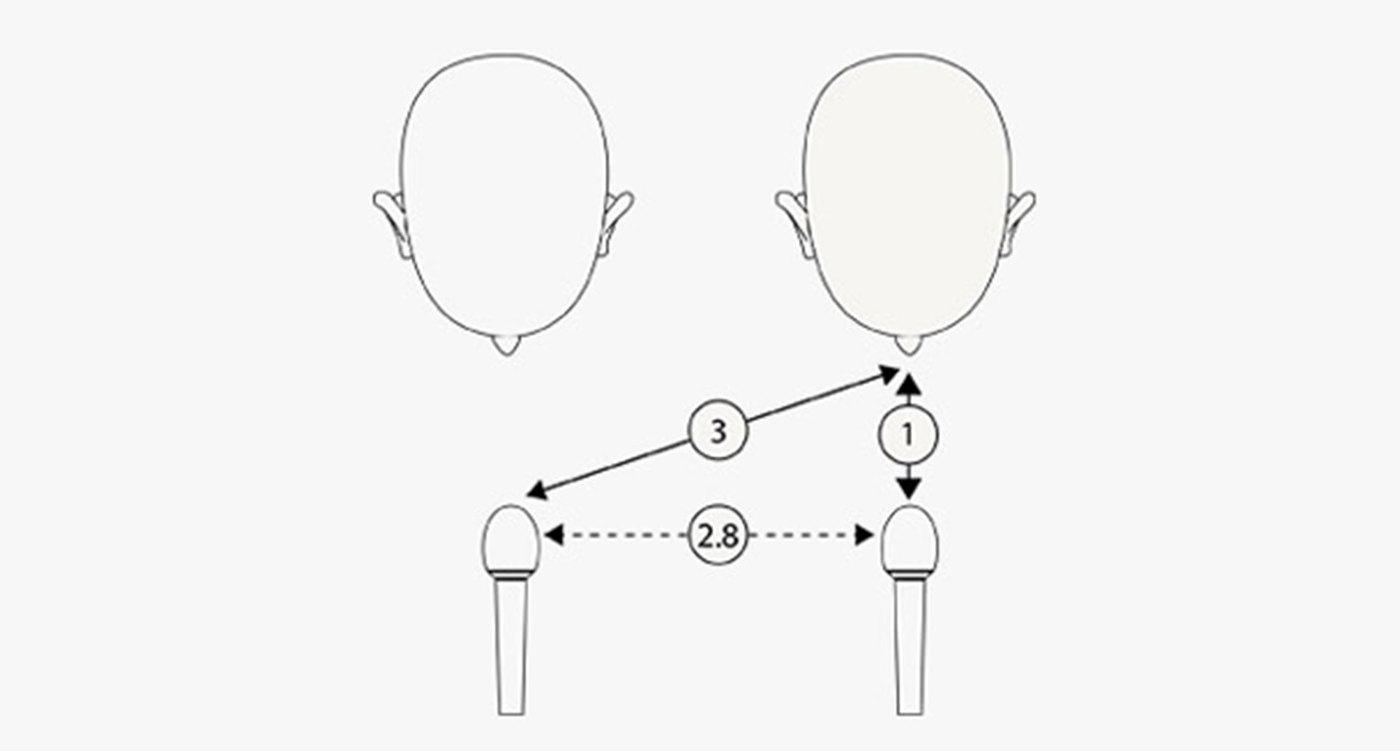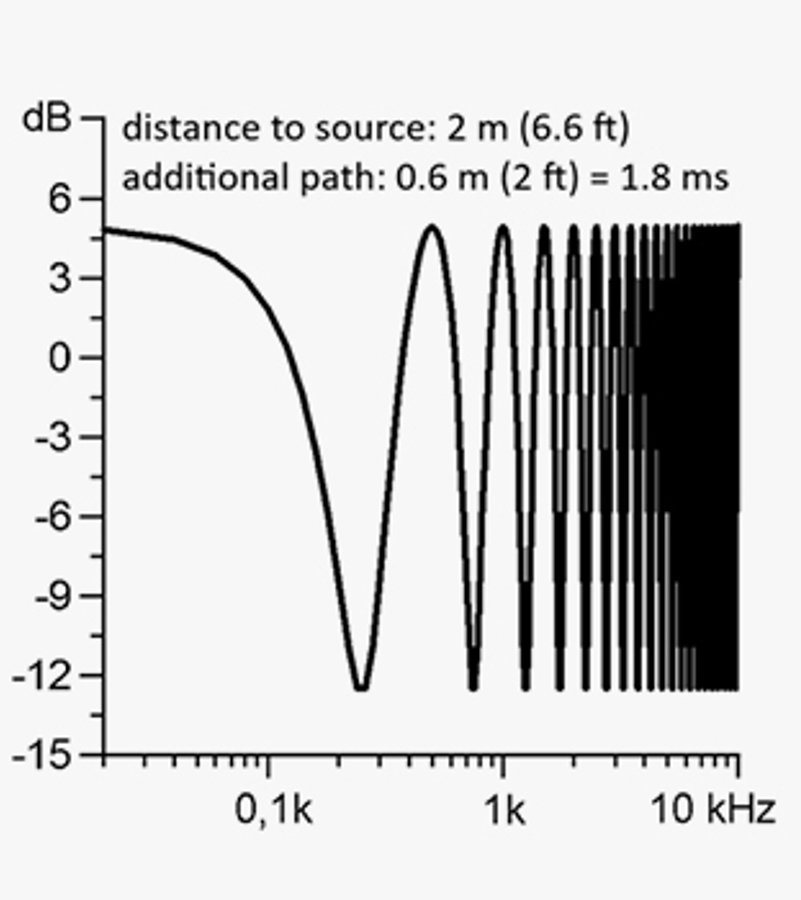This rule deals with minimizing the audible phasing problems when summing several microphones to mono. The rule states that the source-to-microphone distance of numerous microphones should be three times the distance between the sound source and the nearest microphone.
Phase peaks and dips from the same sound source occur when panned to the same position at approximately the same level, which will be the case using more than one microphone.
A rule-of-thumb for minimizing phasing issues is to have around 10 dB level difference between the microphone contributions.
The 3:1 distance rule addresses this need. Another workaround is to pan microphones in the mix, which will, by the nature of panning, also create level differences.

